Abu Simbel Great Temples
King Ramses II built the Abu Simbel Great Temples. Ramses II ruled Egypt from 1290-1223 BC, in the 19th Dynasty. Ramses II built the Great Temple for himself and the great Hours of Bohen. He also built the Small Temple for his beloved wife, Queen Nefertari, and the goddess Hathor of Ibshek. He had chosen to build the Great Temples of Abu Simbel, 280 km southwest of Aswan.
Where are the Great Temples of Abu Simbel?
The Great Temple of Abu Simbel, in Nubia near Egypt’s southern border, is among the most awe-inspiring monuments of Egypt. King Ramesses II cut the Temples of Abu Simbel into the living rock. The temple is most known for the four imposing seated colossal statues that dominate its façade. One of these collapsed because of an ancient earthquake, and its fragments can still be seen on the ground.
Four Colossal standing statues of King Ramses II line the main hall, leading to the sanctuary where four deities sat: Amun Ra, Ra Horakhty, Ptah, and a deified version of Ramesses II.
Abu Simbel Solar Alignment
The architect had built with such precision that on two days a year, the 21st of February and the 21st of October, the sun’s rays enter the temple, cross the main hall, and illuminate the innermost statues. Now, after moving and saving the Temples of Abu Simbel with such precision that on two days a year changed with only one day, the 22nd of February and the 22nd of October. To be honest, seeing the volume of the transfer of the Temple, it seems to be a miracle done by men
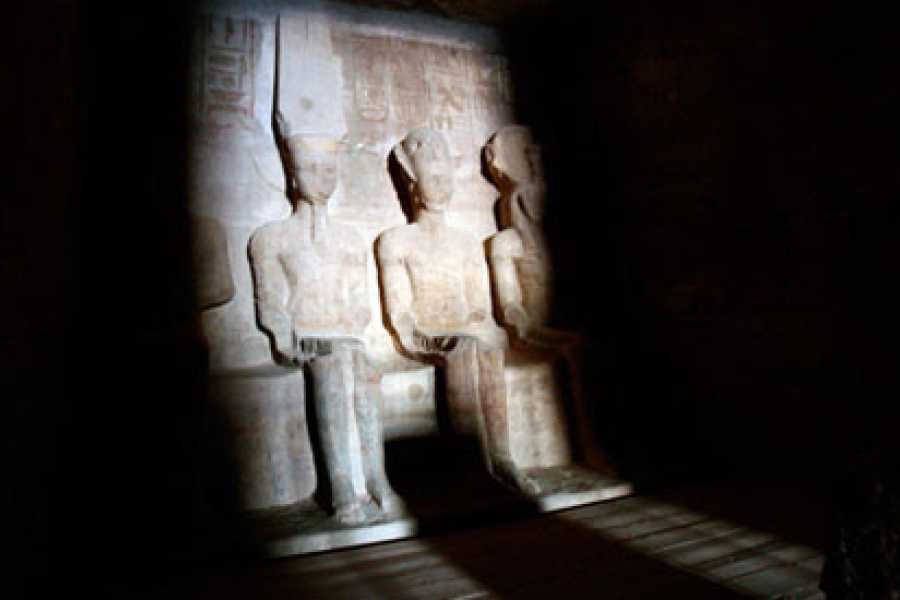
Another rock-cut temple to the north, known as the Small Temple, is dedicated to the goddess Hathor and Ramesses II’s Great Royal Wife, Queen Nefertari. On the façade of the Small Temple, her colossi are the same size as those of her husband, a very rare example of such a display.
In 1958, after the idea Aswan High Dam, the Egyptian government had to move the temples as it threatened to submerge them. The relocation was completed thanks to an international effort led by UNESCO, and the temple was added to its list of World Heritage Sites in 1979.
The Great Temple of Abu Simbel of King Ramses II
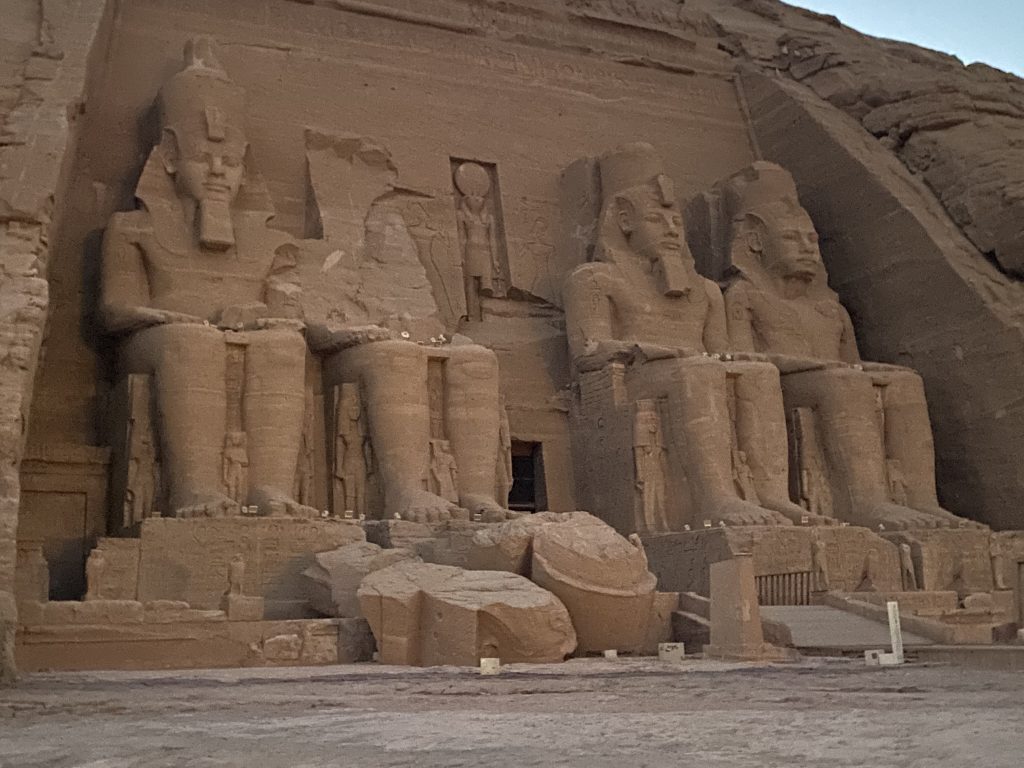
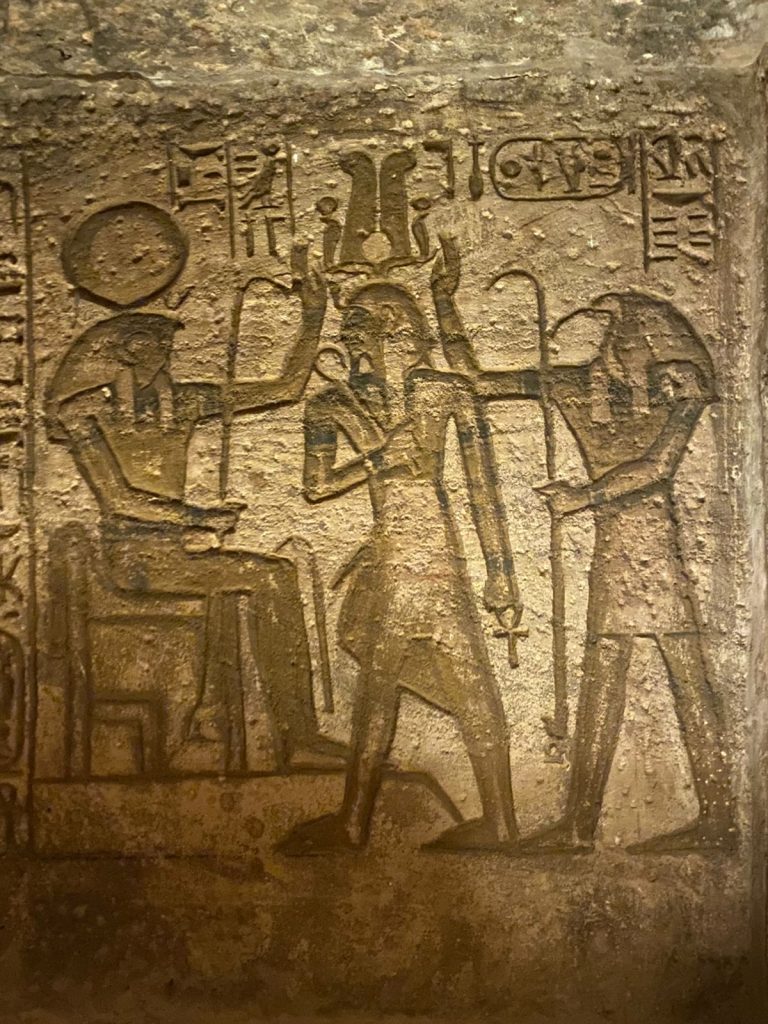
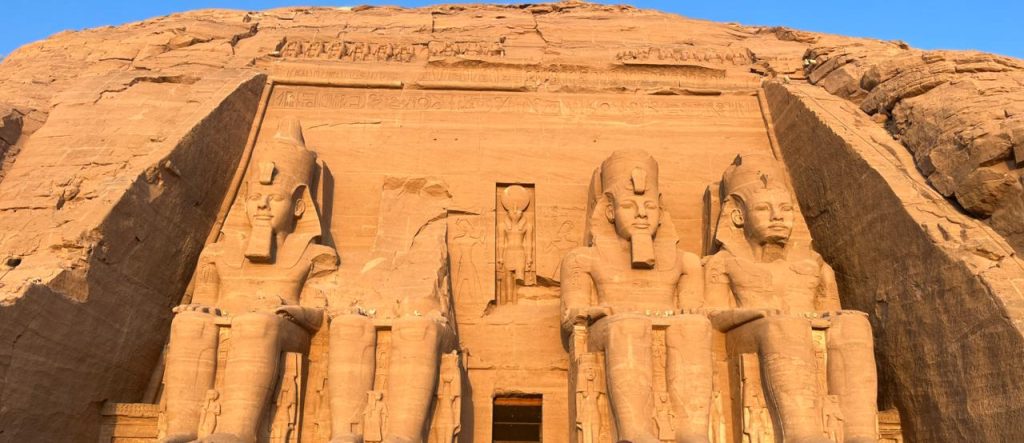
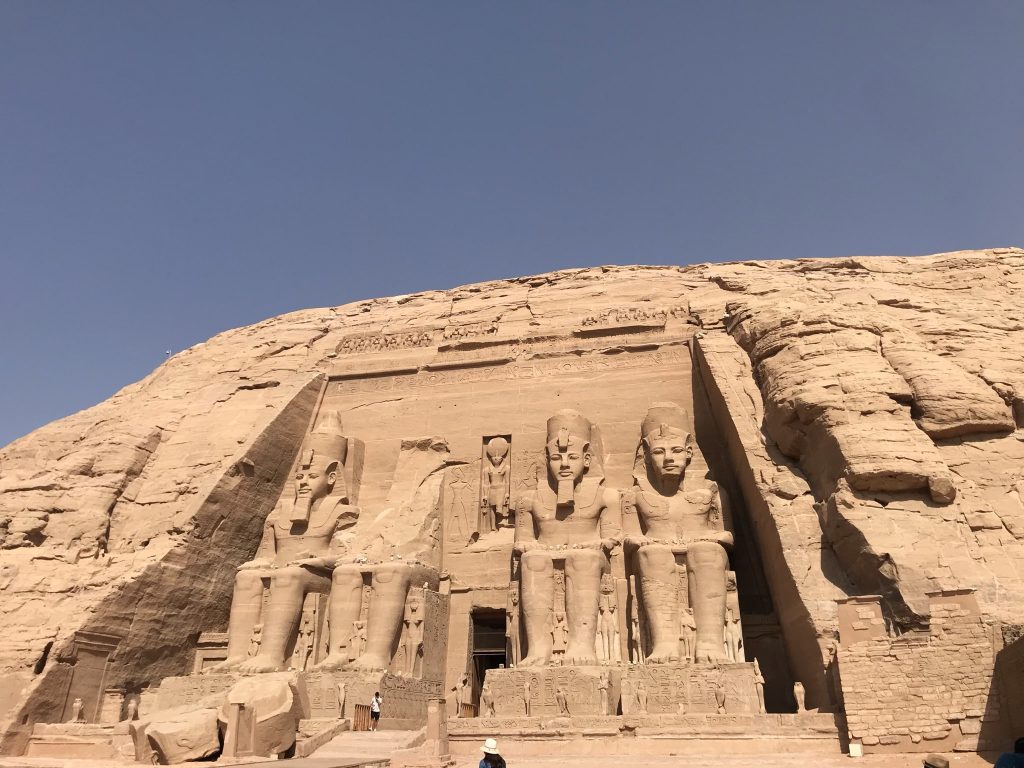
The Small Temple of Abu Simbel of Queen Nefertari
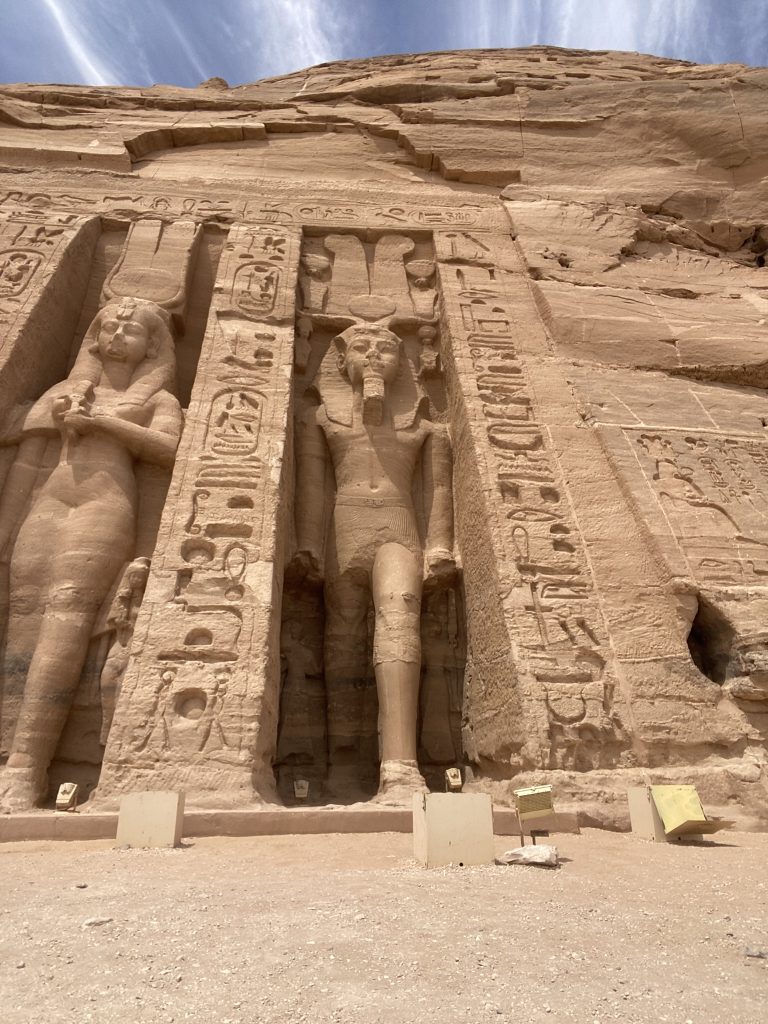
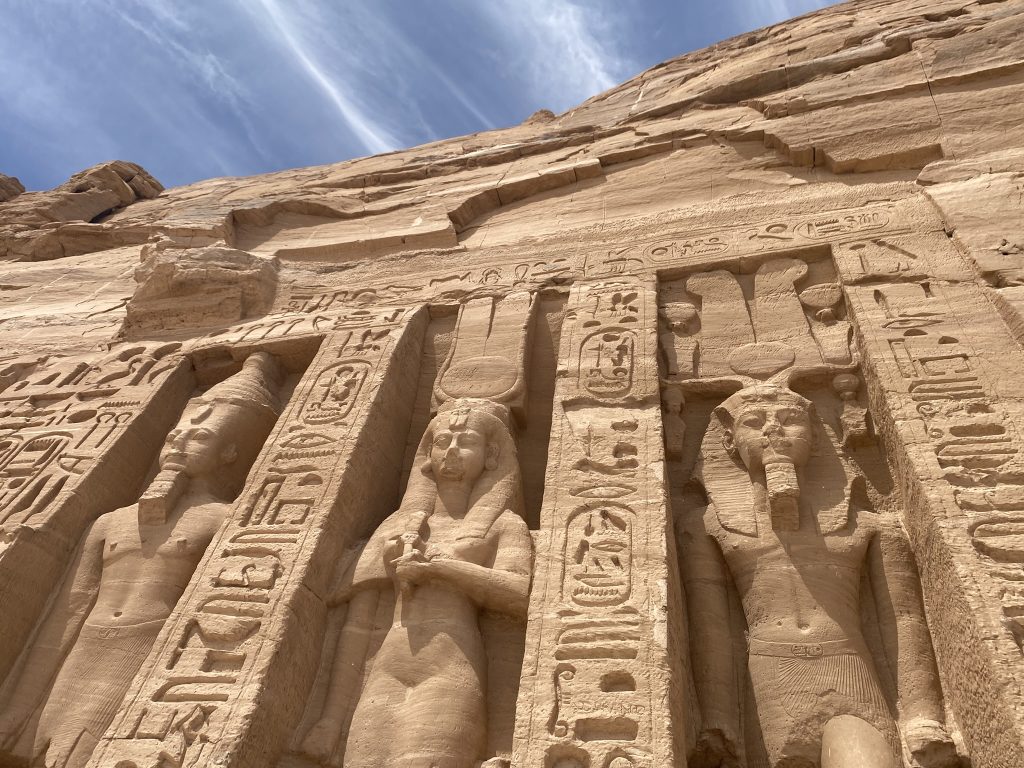
Queen Nefertari was the main royal wife of King Ramses II. Because of his love for Queen Nefertrai, Ramses II had built a temple dedicated to her near his Great Temples of Abu Simbel. They cut the whole temple into the rock. Six niches contain six gigantic, colossal statues. By the way, there are three on each side. A statue of Queen Nefertari flanked by two statues of King Ramses II himself
The one for whom the sun shines
King Ramses II had built this temple for his beloved wife Queen “Nefertari,” The most beautiful one. Finally, on the facade of the Abu Simbel Small Temple, he described his wife. “The one for whom the sun shines,” this reflects his love for Queen Nefertari.
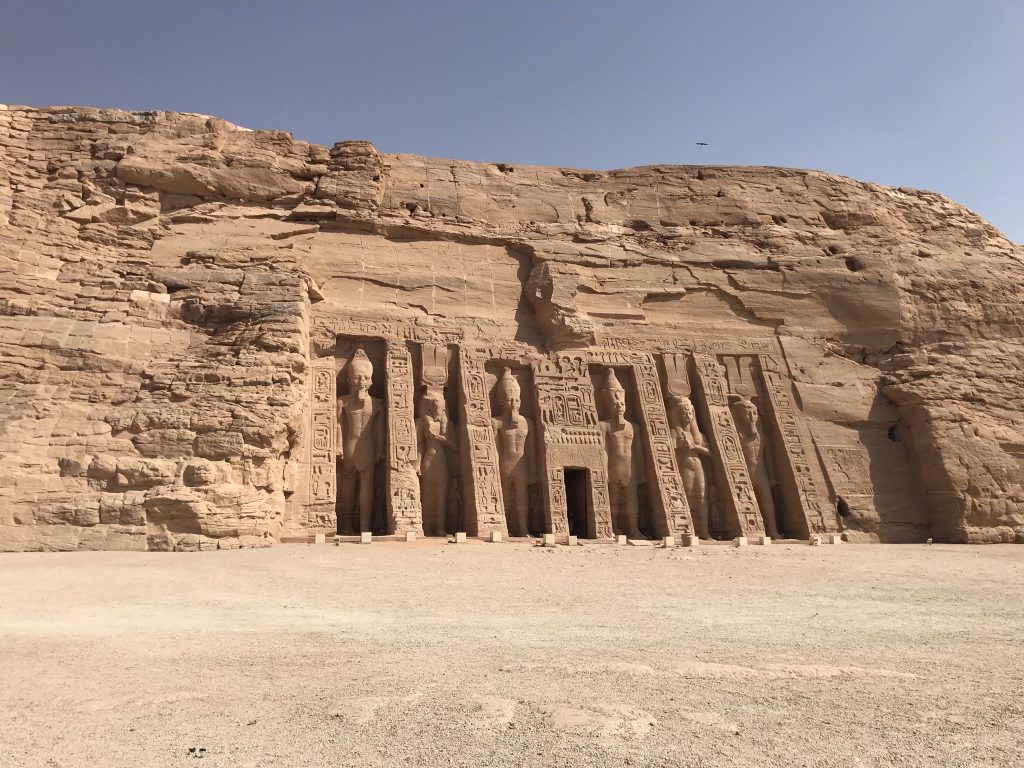
How to visit the Great Temples of Abu Simbel?
- Firstly, you need to be in Aswan. You will have two options: to travel by an air-conditioned vehicle for 280 km, 3.5 hours. By the way, you can book a flight from Aswan to Abu Simbel, which is about 30-40 minutes.
- You can book the Nile Cruise itinerary, which includes your visit to Abu Simbel Temples when you are in Aswan. https://www.egypteasyway.com/en/tour/nile-cruise-pyramids-luxor
- You can contact us on https://www.egypteasyway.com/en/contact-us-book-your-trip/

